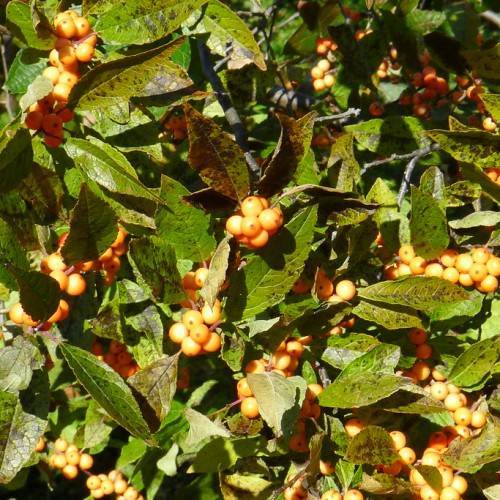
winterberry
Ilex verticillata 'Winter Gold'
Cycle:
Perennial
Watering:
Frequent
Hardiness Zone:
3 - 9
Flowers:
Flowers
Sun:
Full sun,part shade
Fruits:
Fruits Ready In Winter
Edible:
Yes
Leaf:
Yes
Growth Rate:
Low
Maintenance:
Low
Drought Tolerant:
Yes
Salt Tolerant:
Yes
watering
Winterberry (Ilex verticillata 'Winter Gold') require regular watering in order to thrive. During its first growing season, the plant should be watered deeply to encourage healthier growth. This can be done 2 to 3 times a week, ensuring that soil is kept moist but not wet. Once established, winterberry should be watered once or twice a week. During dry periods, it's important to increase watering to keep the soil from becoming dry. In hot weather, it's a good idea to water more frequently to prevent the soil from drying out too much. If the foliage starts to wilt and become dry, this is a sign that the plant needs to be watered. It's important to avoid over-watering, as this can lead to root rot and other related problems.
sunlight
Winterberry (Ilex verticillata 'Winter Gold') plants are a hardy deciduous shrub that are generally found in areas with full to partial sunlight. For best growth and flowering, Winterberry plants should receive at least 6 to 8 hours of direct sunlight each day. Depending on the time of year, and your location, you may need to adjust the amount of sun that Winterberry plants receive. During the warmer, months of the year they should receive the full 8 hours of sunlight, whereas in the cooler months, especially during winter, they should receive less. Keeping Winterberry plants in an area with full sun exposure will result in more vibrant foliage and larger more colorful, fruit production.
pruning
Winterberry (Ilex verticillata 'Winter Gold') should be pruned in late winter (February to March) after its period of flowering and fruiting has concluded. Pruning the plant annually will promote growth and maintain the desired size and shape. Start by removing any dead, diseased, or damaged branches and then reduce the interior height of the shrub by about 1 third. This will encourage the inside branches to spread out and can water down this way will promote larger, plumper berries in the following season. Finally, remove any twiggy shoots from the plant's interior and any branches that cross or rub against other branches.
